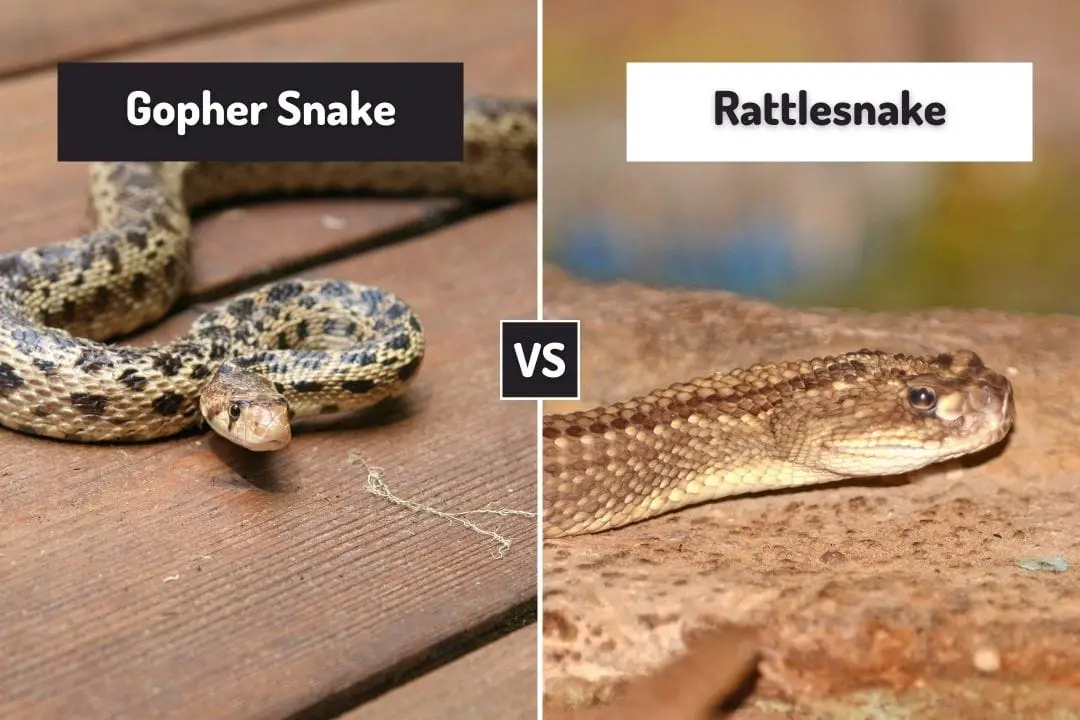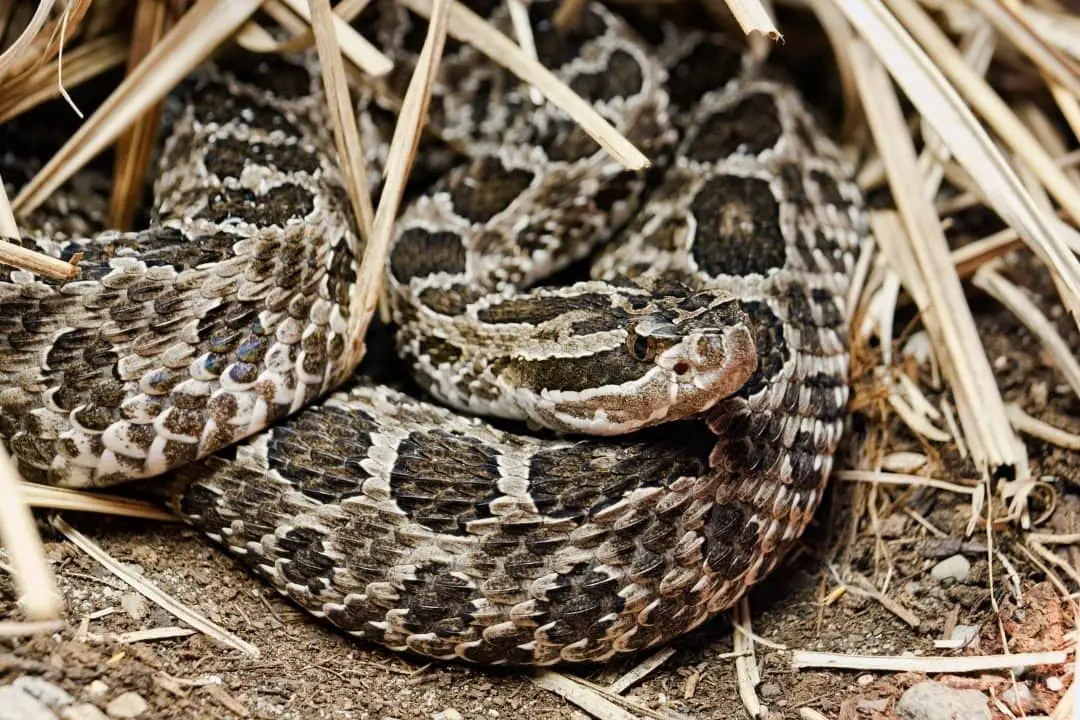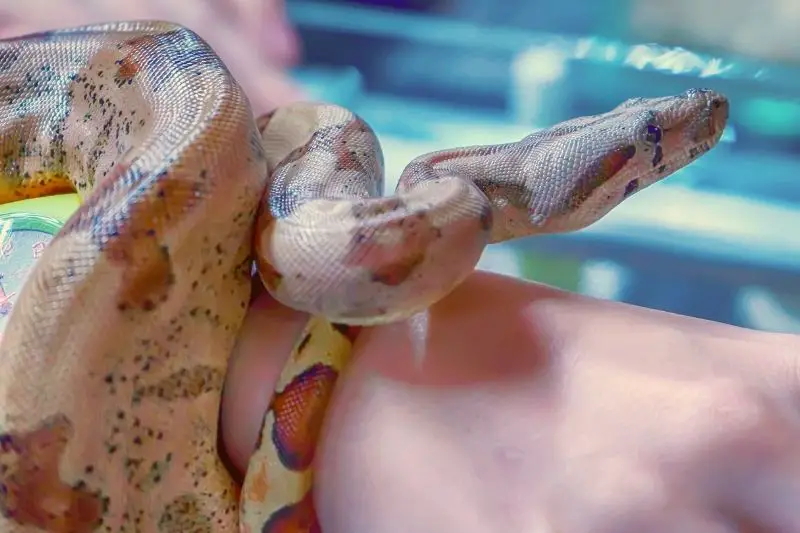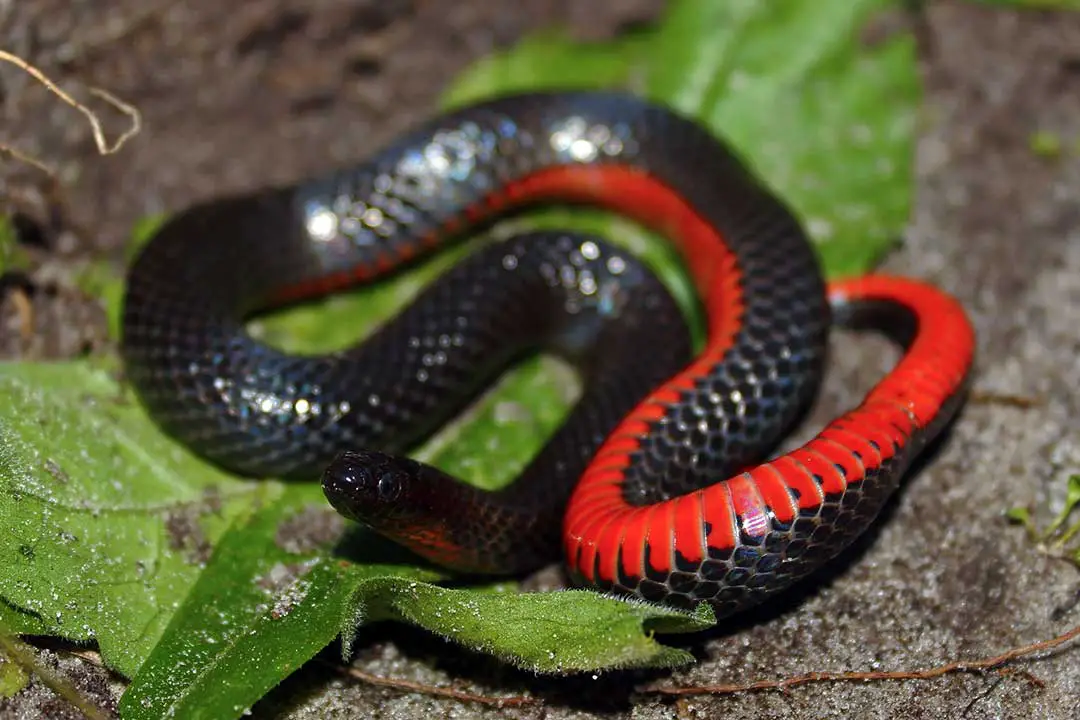Gopher snakes (Pituophis catenifer) are nonvenomous snakes found over much of the western United States.
They are frequently mistaken for rattlesnakes (Croatlus genus). These snakes do share a range with the exact species and subspecies depending on the area you are in.
A frightened gopher snake will frequently mimic a rattlesnake in the hope of convincing you that you should leave it be. There are some easy ways to tell the species apart.
Here is how to tell them apart:
1. Head Shape
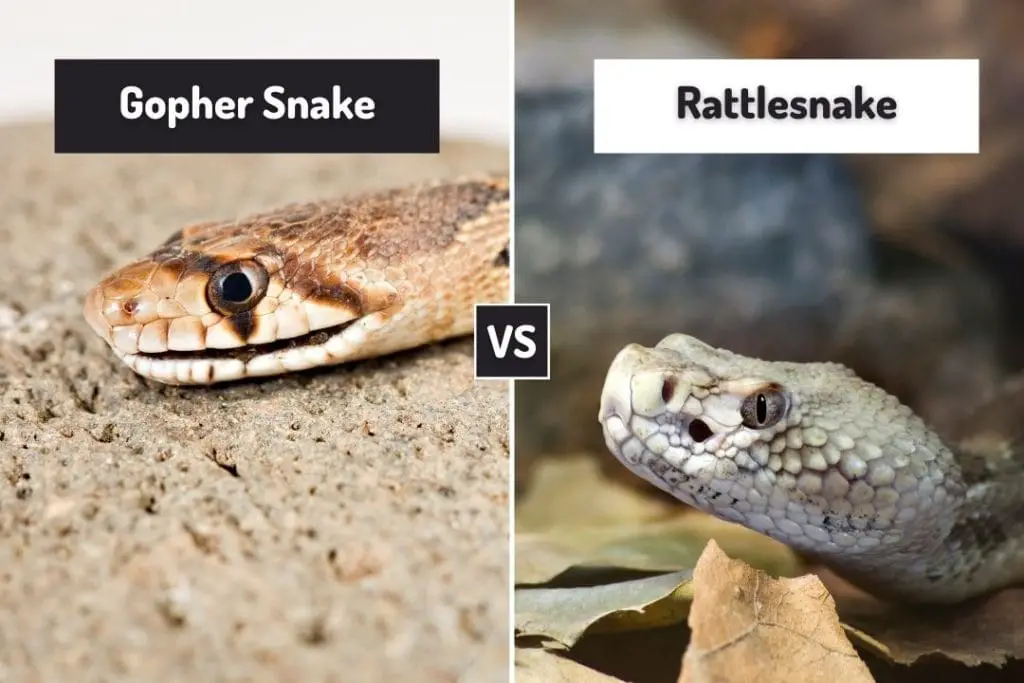
Head shape is one of the easiest ways to tell. If the snake is relaxed and just going about its day, it will be easy to tell.
Rattlesnakes have a wide head that is very distinct from the neck. A gopher snake has a much narrower head that is barely distinct from the neck.
A defensive gopher snake will spread out its head to try to convince you it is a dangerous snake. You can use other characteristics to help tell them apart.
2. Eyes and Other Head Features
One of the big differences tends to be the eyes.
- Rattlesnakes all have elliptical pupils like a cat. There is a scale above the eye that makes the eyes not visible if you are looking at the snake from directly above it.
- Gopher snakes have eyes that can be seen from above. They also have round pupils and large eyes.
Rattlesnakes tend to have a blunt snout and a very thick head.
Gopher snakes have a more slender snout. If the snake is flattening its head to appear similar to a rattlesnake, the head will look thin from the side.
Rattlesnakes are also pit vipers and venomous snakes. They have pits on the face that allow them to sense heat. Gopher snakes lack these facial pits.
3. Tail
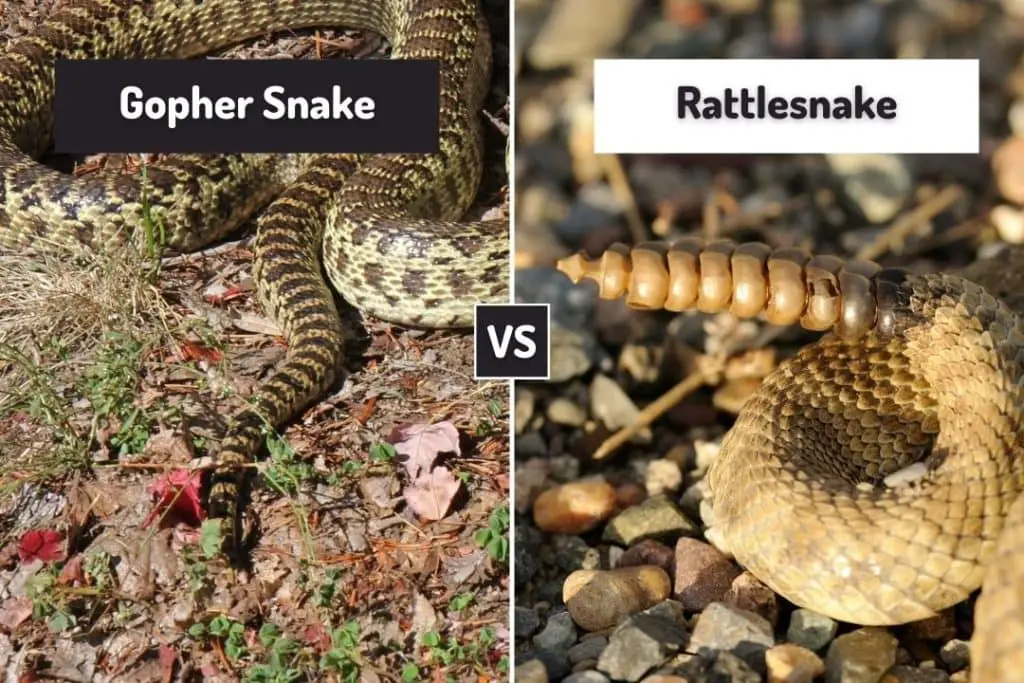
The tail is one of the biggest differences.
Rattlesnakes have a distinctive rattle on the tip of the tail. Adults will have a number of these keratin structures on the tip of the tail to allow them to produce the rattle that gives the snake their name.
They typically gain more segments with age. A baby rattlesnake will have a single “button” on the tip of its tail.
This gives the tail a blunt appearance. Gopher snakes have a tail without a rattle. The tail tapers to a slim tip. The tail also keeps the color and pattern of the rest of the snake. Many species of rattlesnake have darker tails.
4. Body
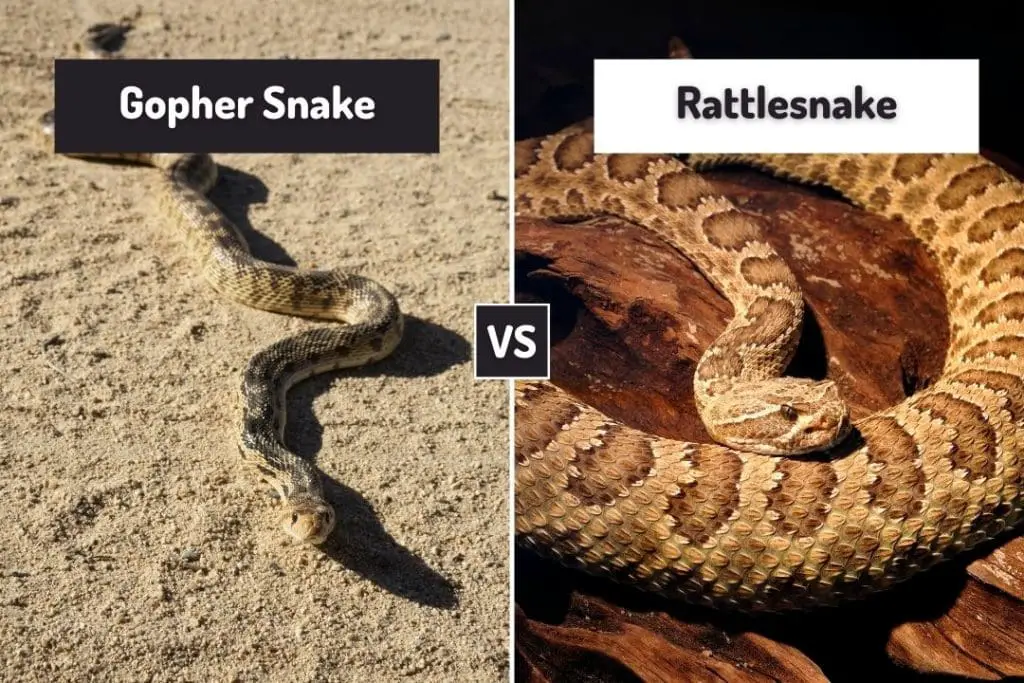
- Rattlesnakes are very thick animals. They have a thick body compared to their length. Their bodies have a distinctly thicker middle that tapers down towards the neck and tail.
- Gopher snakes are much more slender. Their bodies have a gradual change in girth. They can be more easily mistaken if the gopher snake ate a meal in the past few days.
5. Behavior
Rattlesnakes are primarily nocturnal in the summers. Adults will be active mostly at night while young rattlesnakes may be active during the day.
Gopher snakes are primarily diurnal snakes. They spend most of their time in underground burrows but they will come out to bask during the day or hunt.
Gopher snakes eat rodents with gophers making up a good portion of the diet. Rattlesnakes also eat rodents but they will eat reptiles, insects, and other snakes depending on the species, age of the animal, and what is available in their area at the time.
Rattlesnakes give birth to live young. The female carries her young. Some species will defend the young for a few hours after birth.
Then the babies will be left to their own devices. Some species of rattlesnake will spend the cold months denning together and separate in the spring after mating.
Gopher snakes are solitary outside of mating. Gopher snakes lay eggs. Females will lay their eggs in a burrow and leave them. There is no parental care beyond selecting a hidden spot to lay the eggs.
Defensive behavior is one of the best ways to tell them apart. Rattlesnakes may hiss, but they typically announce their presence by rattling their tail.
They will frequently puff up before they make any defensive bites.
Gopher snakes will produce a loud hiss if a human steps too close. They will flatten their heads to try to convince a potential predator that they are a rattlesnake. This bluffing behavior can be seen in many harmless snakes.
6. Size
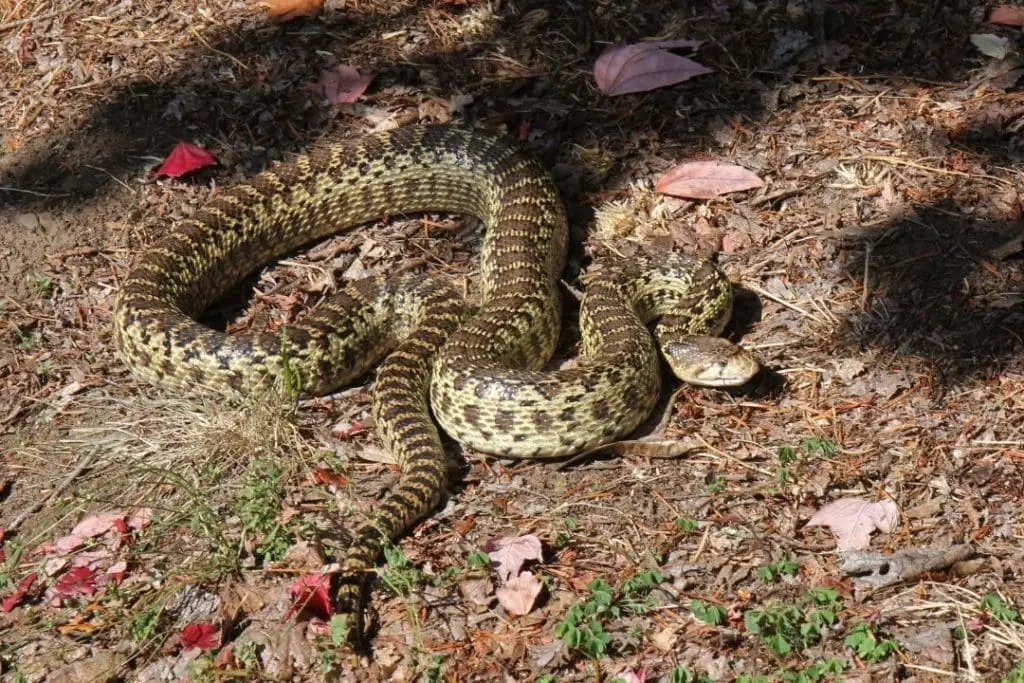
Most rattlesnakes are fairly small. They tend to be between 3 and 6 feet depending on the exact species. Some are as small as 2 feet long while others will be 4 feet.
Gopher snakes tend to be longer as adults. They can be between 5 and 9 feet long once they reach their full size.
This can be handy for identifying adult snakes, but may not help with young animals that have not reached full size yet.
7. Color and Pattern
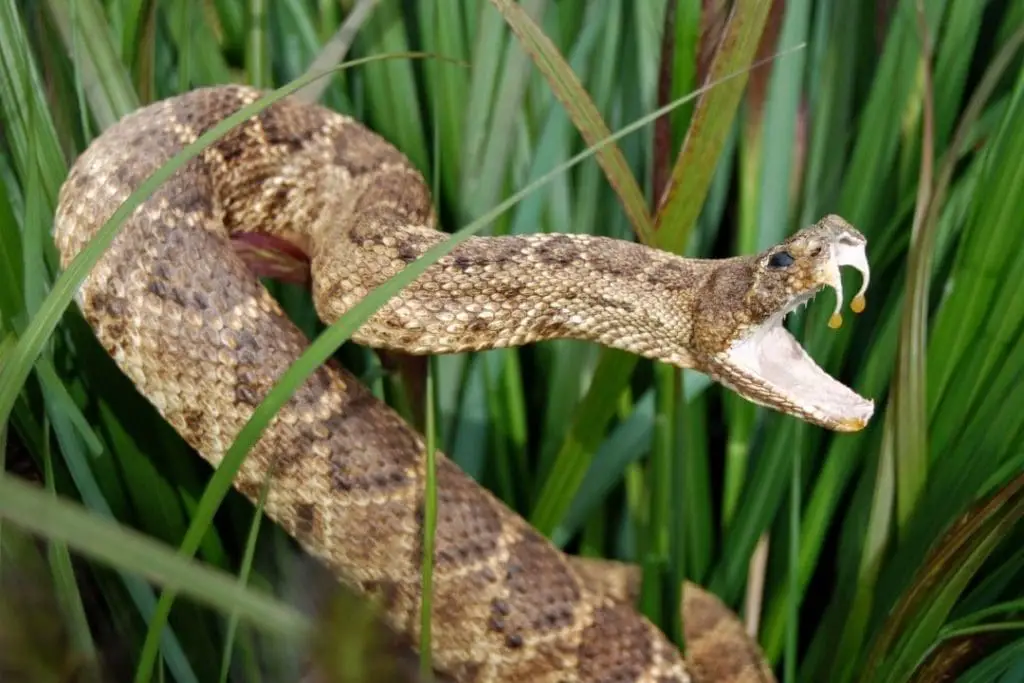
Most snakes that live in a similar region will have a similar range of colors. This is to help them blend into their surroundings.
One big difference is the texture of the scales.
Rattlesnakes tend to have keeled scales that give them a rough appearance. Gopher snakes have a smoother appearance to their scales. They also tend to be shinier.
The exact colors and patterns of a rattlesnake will depend on the species. Sidewinders are pale beige with light brown markings and a pointed scale above the eyes.
The eastern diamondback rattlesnake has darker diamonds along the back. Gopher snakes vary from straw yellow to gray with brown or black blotches along the back of the snake.
We hope this helps you to tell apart harmless gopher snakes from rattlesnakes. You should still leave any wild snake you find alone.
Even a gopher snake can give a painful bite if you upset it. All snakes should be given a respectful distance.
You can always call a removal specialist if a snake is in an area where humans, pets, or the snake are in danger.
If you have seen these snakes in the wild, we would love to hear about your experiences. We also welcome any other questions or comments you have.
